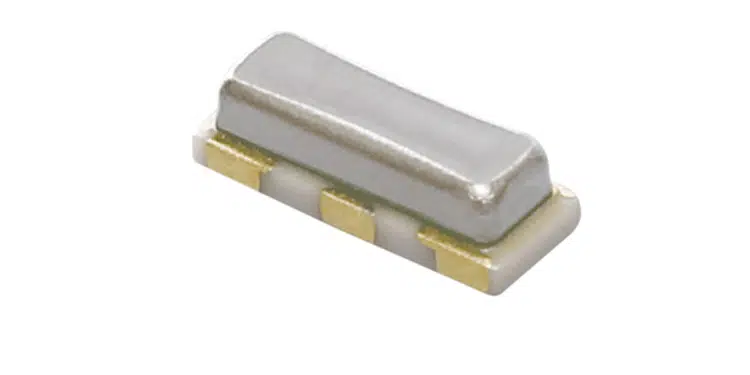Murata Manufacturing Co., Ltd. announces the release of the CSTNE-VH5T series of ceramic resonators (CERALOCK) with improved frequency accuracy and support for CAN*1-FD*2.
The extensive utilization of electronic systems in automobiles has created demand for faster data transfer speeds in the networks linking the various in-vehicle functions. The CAN communication standard widely used in automobiles is being extended from the original Classic CAN, which supports transfer rates up to 500 kbps, to the newer CAN-FD, which can achieve transfer rates of 1 Mbps and above. The rollout of CAN-FD means that the timing devices used to generate the communication reference clock require higher frequency accuracy. In response, Murata has made further design refinements and efforts to reduce process variations, resulting in the new CSTNE-VH5T series with oscillation frequency accuracy sufficient for CAN-FD.
Murata ceramic resonators (CERALOCK) are widely used as timing devices in automotive applications due to their reliability, durability, and excellent balance between cost and performance. They already have a well-established track record in the market. Moving forward, Murata hopes to further expand its lineup of high-performance and highly reliable ceramic resonators (CERALOCK), thereby contributing to the advance of electronic systems for automobiles.
Product Features
- Highly reliable, low failure rate
- Fast oscillation startup
- Reduced space requirements due to its internal load capacitance and greater flexibility in circuit design and board layout design
Main specifications (example: CSTNE16M0VH5T000R0)
- Oscillation frequency deviation tolerance: −0.10% / +0.04% (equivalent to ±0.07%)
- Oscillation frequency temperature dependency: −0.10% / +0.12% (equivalent to ±0.11%)
- Oscillation frequency aging: −0.03% / +0.07% (equivalent to ±0.05%)
The new products entered mass production in April 2021.
*1.CAN: Controller Area Network
*2.CAN-FD: CAN Flexible Data rate
































